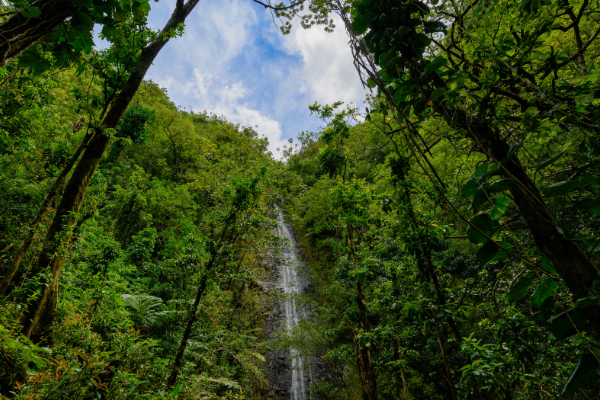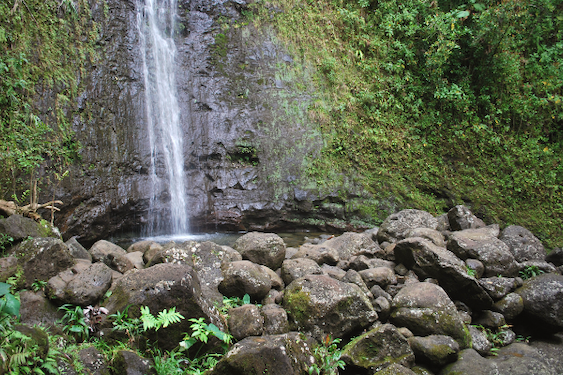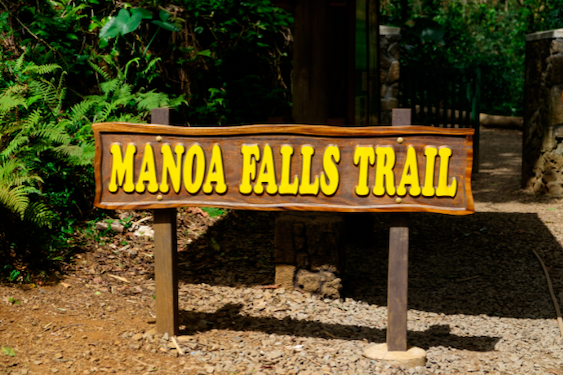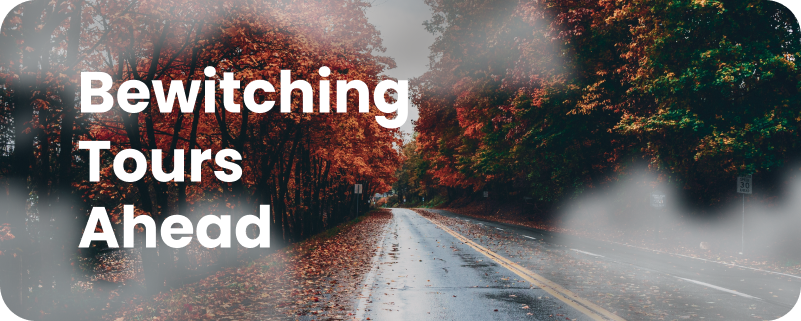
Manoa Falls Travel Guide

- Park at Paradise Park early—$7/car fee (discounts for residents/military); lots fill fast.
- The 1.6-mile trail takes ~1–1.5 hrs round‑trip; expect slippery/muddy conditions—wear sturdy, closed‑toe shoes.
- Do not swim—Leptospirosis risk and fatal slips are common; stay behind barriers for safety.
TABLE OF CONTENTS
- About Manoa Falls
- Getting to Manoa Falls
- Parking
- What is the history of Manoa Valley?
- What do I need to know to hike to Manoa Falls?
- Can you swim in Manoa Falls?
- What should you pack for your hike to Manoa Falls?
- Tips
Manoa Falls Overview
Hours: Sunrise to Sunset
Price: The Manoa Falls hike is free to the public.
Trail: There is a 1.6-mile round-trip hike to reach the falls.
About Manoa Falls
Manoa Falls is a spectacular 150-foot waterfall located in the lush Manoa Valley in Honolulu.
Cascading down a sheer cliff into a beautiful pool below, this majestic natural wonder draws thousands of visitors each year.
The surrounding rainforest is home to native bird species and exotic flora and fauna. Bring your binoculars to spot these colorful tropical birds and pause along the trail to listen to their songs.
FUN FACT: The majestic falls served as a filming location in several popular movies, including the original 1993 Jurassic Park and its sequel Jurassic World, as well as the movie Catching Fire.
Getting to Manoa Falls
Manoa Valley is located just 15 minutes from Waikiki by car.
You can also take route 5 of TheBus from Ala Moana Shopping Center. From there, it’s a 10-minute walk to the trailhead.
For driving directions or details on taking TheBus, visit the State of Hawaii DLNR Manoa Falls Trail Information page.
Click on the Get Directions icon or jump to Description in the menu and scroll down to Directions for information on taking TheBus.
Parking
The Paradise Park parking lot is located at the trailhead, with additional parking available up the road.
The parking fee is $7 per car.
There are discounts for residents of Hawaii with a Hawaii ID and Military Discounts.
RELATED: Makapu'u Point Lighthouse Trail Travel Guide

What is the history of Manoa Valley?
Nestled deep in the valley, through the towering trees and bamboo groves, lies history and legend.
Manoa was formed as part of a volcanic eruption. Over the years, the rains, winds, and the river have molded this area into what we see today—a deep valley with saw-tooth mountain ridges.
The early Hawaiians named this valley Mano, which means ‘wide and vast.' It’s a fitting name for this beautiful valley.
The ancient Hawaiians skillfully managed this pristine landscape, taking only the resources they needed to maintain the delicate balance of a flourishing ecosystem.
They gathered trees from the forest to build shelters, tools, and canoes, and they carefully harvested plants for food and medicine.
They also believed this valley was sacred because it was home to the gods.
A Hawaiian legend tells the captivating story of Princess Kahalaopuna of Manoa, daughter of the Wind and Rain.
Two inferior chiefs heard of the beauty of the princess, and jealous that they could not have her, spread lies about a romance with her.
Her betrothed Kahui believed them and, in a fit of jealousy, he took her life.
Mercifully, Kahalaopuna was restored back to life by the gods in secret.
The King, after hearing the tale, turned the two troublemakers into the twin peaks in Manoa, and Kahui became a shark.
RELATED: The Long History of Manoa Valley
Today, the waterfall and valley is a popular tourist destination.
Take a moment to read the interpretive signs about the valley's history, native plants, birds, and wildlife.
As visitors to this ancient valley, it is a privilege to peek into the past and see a part of Hawaii as it used to be.
And it's our kuleana, or responsibility, to leave as little impact on the land as we can.

What do I need to know to hike to Manoa Falls?
Manoa Falls trail is considered an easy-to-moderate trail suitable for novice hikers and takes between 1-2 hours to complete.
It's best to begin the hike before 5:30 p.m. in order to complete it before nighfall.
The trail is .8 mile one way / 1.6 miles round trip and has an elevation gain of about 800 feet.
A restaurant and restrooms are located inside a shopping area at the parking entrance.
When you first enter the trail, you will pass through a shipping container into a big open field.
Follow the trail across a small footbridge into a grove of Eucalyptus trees.
The trail gradually climbs through a lush rainforest, where tropical birds and native flora can be seen.
There are benches along the way if you need to rest, and huge banyan trees which make a perfect spot for photos.
Eventually, you will pass through a bamboo grove and head toward the cascading falls.
The 150-foot waterfall makes for a picturesque scene. Water flow depends on the rain and the season.
The viewing area at the base of the falls is surrounded by a rock wall.
NOTE: DO NOT GO BEYOND THE ROCK WALL! Do not go into closed areas or into the pool. These areas are extremely dangerous due to fast-flowing water, falling rocks, and slippery ledges. Accidental falls have caused fatalities here.
Can you swim in Manoa Falls?
No. Swimming in the falls or stream is strictly prohibited due to leptospirosis and falling rocks.
Stay behind the viewing area cable, and do not go past the warning signs—even if you see other hikers doing so. This is for your safety!
NOTE: Leptospirosis is an infectious disease passed from animals to people. Unfortunately, the bacteria that cause this disease are found in many of Hawaii's freshwater streams. The sickness causes flu-like symptoms and can be fatal if left untreated. It is definitely a souvenir you DO NOT want to bring home from your Hawaiian vacation!

What should you pack for your hike to Manoa Falls?
Bug repellent is a must as you head deeper into the rainforest. We also recommend bringing a light rain jacket.
And definitely wear waterproof shoes with good grip or hiking boots as the trail can get muddy and slippery.
The Department of Land and Natural Resources (DLNR) also recommends packing a first aid kit, whistle, flashlight, and something brightly colored in case of an emergency.
We’ll guide you to Manoa Falls on our Honolulu Backyard Rainforest Tour.
Tips
If you're in the area on a weekday, be sure to check out the nearby Lyon Arboretum!
Located on the way to the trail, the arboretum was established in the 1920s for research and reforestation purposes.
Today, the research garden is part of the University of Hawai'i and open to the public.
It features more than seven miles of hiking trails and over 6,000 species of tropical plants.
Lyon Arboretum is free to visit, but online reservations are required for parking. A $10 donation is suggested.
To make a parking reservation or learn about upcoming closures, visit the Lyon Arboretum website.
Like this article? Share it on Pinterest!

RELATED:


























 to fuel your ride
to fuel your ride 
